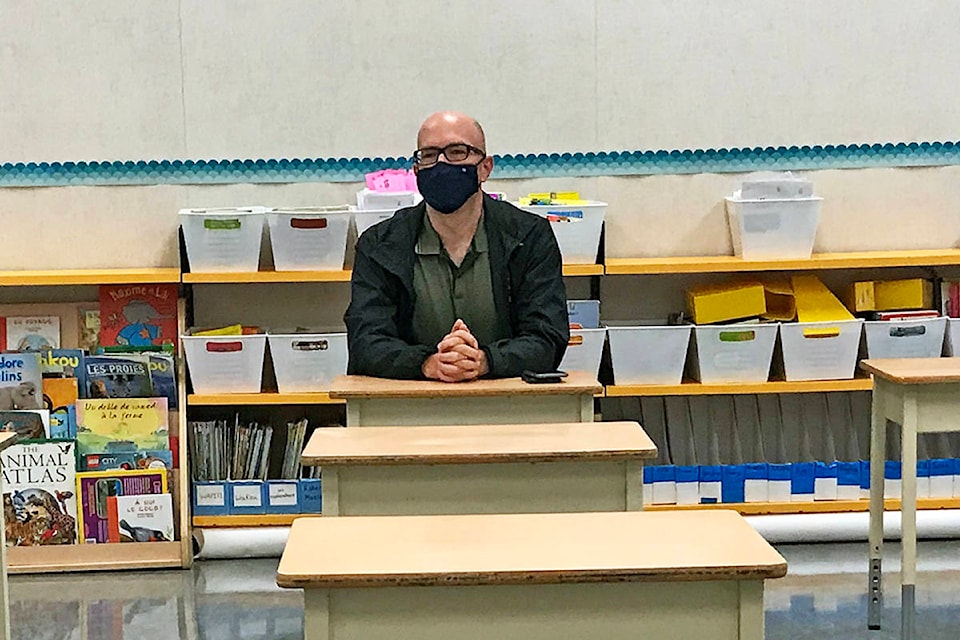Mission’s school restart has successfully brought an average of 90 per cent of its students back to classrooms, without a single COVID-19 exposure.
But Superintendent Angus Wilson said future exposures are “inevitable,” and parents should expect challenges to surface.
“We are expecting it to happen at some point, and we are ready for when that occurs, but we are trying our best to minimize the chances,” Wilson said. “If you’ve been grocery shopping, you’ve probably been in an exposure situation and just never knew about it.”
Enrolment numbers for regular classes was a big question mark for school administrators before the restart on Sept. 10, as school districts rely on enrolment for provincial funding.
Although it varies from school to school, on average, 90 per cent of students have come back – with Mission Secondary School at the top of the percentile, Wilson said.
“Broadly speaking, the trend is [showing] people returning to regular school and transitioning back,” he said. “We have a few students returning back for the month of October as well.”
Some families have opted to have their kids enroll at Summit Learning Centre for digital-only classes, but spots have been held open for any students who wish to return to their physical desks at a later date, Wilson said.
He said the district currently has no intention of trying to increase the size of students cohorts, which has a strict limitation of 60 (including teachers and staff) under provincial health mandates.
Another positive outcome has been the adherence to the safety protocols set out by Fraser Health authorities, according to Wilson. He said the district’s transportation manager was “pleasantly relieved” after mask wearing became mandatory on school buses.
There are supervisors and vice-principals monitoring the social distancing rules, but the students themselves are “pretty good at self-enforcing,” Wilson said.
“Overall, it has gone pretty well,” He said. “People are pretty respectful of the expectations around mask wearing … I have not heard of any significant pushback.”
…
But certain challenges still loom over the school district’s operation.
One example is a significant degree of absenteeism among students, which rose up to 17 per cent of a student population at one elementary school, along with 10 per cent of another middle school last week.
Missed classes make classes run less efficiently, and puts demands on staffing, and substitute-teacher costs, Wilson said.
“We’re actively encouraging people to stay home and stay healthy,” he said. “There is a cost to that.”
These costs are a major “unknown” for the school year, and certain expenses are turning out to be heavier than initially expected, Wilson said.
“We don’t really know where we are going to be financially just yet, because of the various things up in the air,” he said. “We’re spending more money than we thought on hand sanitizer – I’m talking tens of thousands of dollars.”
The provincial government has provided an additional $485,000 for sanitation costs, which allowed the district to reallocate some of their budget to other areas, Wilson said; the federal government has provided just over $2 million, which is going towards staffing and remote learning programs.
And Mission, along with many other school districts, are struggling to fill additional support staff positions, particularly with custodial staff, according to Wilson.
“There just isn’t the supply of labour to do some of the work you’d like to get done,” he said. “I’d say the concern – over the long haul for both students and staff – is maintaining it.
I think everybody’s pretty tired, everybody is working extra hard this year.”
Teachers have made modifications of their teaching programs in an effort to make up for lost time, Wilson said, adding they’re “beating themselves up” over students lagging behind the regular curriculum – but this shouldn’t be a primary concern.
“The whole world is months behind where it should be,” Wilson said. “[We need to] establish a positive relationship with the students before you worry too much about all the catch up, because it’s very daunting to get through all that.
“They are professionals and they’re working really hard to make everything perfectly.”
RELATED: What Missionites need to know as kids return to classes this fall
RELATED: Future COVID-19 unknowns cause conservative budget for Mission School District
